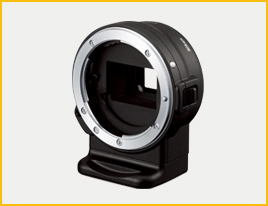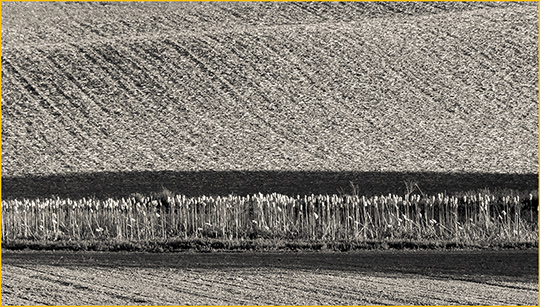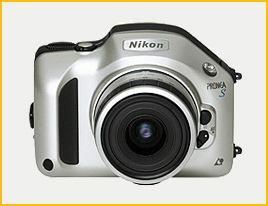
When it was announced in September of 2011, the Nikon 1 System somehow passed me by. I saw the press announcement, looked at the size of the sensor and the specs, and thought –not my cup of tea. That’s OK. My interest and needs are not the same as others. It’s a large and varied marketplace.
But the “mirrorless” segment does interest me. Over the past few years I have extensively worked with both thePanasonic GH2andSony NEX-7, as well as other representative models from Panasonic, Sony, and Olympus.
The buzz in the industry this spring is that Canon will shortly announce its entry into the compact system camera sweepstakes, and so before they do I wanted to round-out my familiarity with the competition by looking at theNikon 1 Series, which I had been (not deliberately) ignoring these past eight months.
Not a Full Review
Please note that this is not a full review, and also that my observations and comments are not intended for the casual user or beginner who are likely to be this camera’s prime customers. Rather, I am looking at the V1 from the perspective of an experienced photographer who might be looking for a small interchangeable lens system – an alternative to Micro Four Thirds or NEX.
For this reason I won’t be commenting on some aspects of the camera’s features or operation, such a Scene Recognition and Slow Motion Movie. There are numerous technical reviews online which address these in considerable detail.
The Basics
If you haven’t been paying attention, the Nikon V1 is the top model of what currently is a two model line-up, which also includes the Nikon J1. The sensor size is called CX by Nikon, and it measures 13.2mm x 8.8mm, giving a 2.7x crop factor over Full Frame 135. By comparison APS-C is either 1.5X or 1.6X, and Micro Four Thirds is 2X. This makes the V1’s sensor half the size of Micro Four Thirds and one third the size of APS-C.
All other things being equal (and how often does that happen?) this puts the Nikon 1 Series at a competitive disadvantage from the get-go. Nikon compensates for this by equipping the J1 and V1 (what an unfortunate name, for those of us with memories of WW2) with a 10MP sensor, while the competition with its larger sensors is now offering 16-24MP.
This means that Nikon’s perceived sensor size disadvantage might not be as severe as it would at first appear, as long as large prints and strong cropping aren’t needed. A 14X21″ print at 180PPI is possible at this resolution, and even at a more stringent 300PPI a 9X13″ size print is possible. My guess is that most people buying this class of camera are unlikely to need larger sizes than this, unless cropping heavily. For the more advanced and demanding user, not so much.
But image quality isn’t the whole story one way or the other, as we’ll soon see.
Fund Raiser Face Painting. Mansfield, Ontario. May, 2012
Nikon V1 with with 30-110VR @ ISO100
Price & Competition
No camera exists in a marketplace vacuum. With the 10-30mm kit lens the 10 Megapixel Nikon V1 sells in the U.S. for $890. A 16 MP Lumix GX1 with 14-42 kit lens is $800, while a 16MP Sony NEX-5n with 18-55mm is $700. Both the Panasonic and the Sony would need to have accessory EVFs added to be comparably equipped to the Nikon, which would level the playing field when it comes to price.
NB:On the same dayas this review was first published in early June, 2012 Nikon announced major price cuts on the J1 and V1. Hard to be certain of the impetus behind this as these models are relatively new and unlikely be be superseded for some time.
The real issue, at least when it comes to marketing, is that the Nikon is a 10 Megapixel camera while the Panasonic and Sony (Olympus and Samsung are in the game as well) are offering 16MP models using somewhat-to-significantly larger sensors.
Since Nikon’s product planning folks are obviously aware of the current and projected state of the market, one really has to wonder what they were thinking when they first planned (apparently some 4 years ago) and then produced the 1 Series.
LCD and EVF
The rear LCD is the requisite 3″ in size, but is neither articulated and nor touch sensitive. There is a built-in 1.4M EVF that is quite decent, though not the best currently available. It features eye detection, but there is no manual method for selecting between the LCD and the EVF. The LCD can be turned off though via the Display button, and its state is remembered during power off, so if you’re using the camera exclusively with the EVF, this is possible. The EVF doesn’t stay illuminated though, only turning on in proximity to ones eye, or hand, or coat. There is the usual annoying delay until it illuminates, found with most such systems.
Accessories
The V1 does not have a standard accessory shoe nor a built-in flash. There is a small proprietary flash unit available as an optional extra, as well as an external stereo mic for video shooting, and a GPS unit. For anyone that already owns some sort of flash unit this is annoying, as there is no standard hot shoe or PC contact, so only the relatively weak proprietary Nikon flash can be used.
Shutters and Shooting Speed
The V1 has two shutter mechanisms, a traditional mechanical shutter and an electronic shutter. The electronic shutter has two advantages – it is totally silent (if you turn off the synthesized sound) and incredibly fast. Even the mechanical shutter isn’t all that noisy.
One advantage of the electronic shutter is that it can shoot as fast as 1/16,000 sec, but the highest flash sync speed is just 1/60 sec. Up to an amazing 60FPS is possible when the electronic shutter is active. When the mechanical shutter is selected the top speed is “limited” to 1/4,000 sec, but flash sync is 1/250 sec and frame rate is a maximum of 5 FPS. Overall a very versatile design.
Farm Geometry #9. Clearview, Ontario. May, 2012
Nikon V1 with with 30-110VR @ ISO100
Auto Focus
The V1 is unique to my knowledge in a non-reflex camera in having both a phase detectionanda contrast detection AF system built in at the sensor level, and does this without the need for a bulky SLT mirror system like Sony’s. This combo works well, with the PD system doing its thing best in bright light, while the CD system is used in lower light conditions (though it gets a lot slower in low light).
The camera has a huge number of AF points, as well as a face detection system. My experience is that it nails AF almost every time in a wide variety of situations, and continious AF is better than any other mirrorless camera to date.
Other Controls
I have been a strong critic of Sony’s NEX user interface from the start. They quickly respond to these criticisms (I wasn’t alone in this) with a firmware update, and each new model improves – slowly. It’s still mostly a horror though, at least on the NEX-5n, though the NEX-7 with its Tri-Navi control wheels is a vast improvement.
Nikon on the V1 also takes a minimalist approach to the user interface, with equally annoying results. For example, neither ISO nor White Balance can be set without going into the menus. And without a PASM mode dial one needs to enter the menu system to even set shooting mode as well.
Why manufacturers think that less sophisticated users need less usable control interfaces continues to elude me. The more advanced user, who this report is primarily aimed at, will likely find the UI on this camera quite annoying. And, it’s my experience as a teacher for many years that the more physical controls a camera has the quicker beginners learn the ropes.
Depth of Field vs. Size
Camera design always consists of a series of compromises. A small and light camera generally means a small sensor. A small sensor means short focal length lenses. Short focal length lenses mean wide depth of field.
But then what about the Sony NEX series? To their credit Sony has been able to build cameras that are as small or smaller than Micro Four Thirds or the Nikon 1 CX format, yet still with a 1.5X APS-C sized sensor. But when it comes to lenses they bump into the laws of physics. The 1 Series Nikons though takes advantage of their small sensor size (if not small body) by making available small collapsible lenses.
Unless you’re specifically looking for deep depth of field for your work, the Nikon CX format is inherently unable to provide the shallow depth of field that is so important for isolating subjects from messy backgrounds. With a 10mm f/2.8 being the fastest current lens, and the other three being nearly one to two stops slower, the V1 is more in the league of superzooms than CSCs when it comes to depth of field control.
As mentioned above, one area where Nikon has a small edge with the 1 Series is lens size. The sensor is small enough that they can design and build smallish lenses with good reach. The 30-110mm is such a lens. It’s equivalent to an 80-300mm, and when collapsed can fit in a coat pocket while mounted on a V1 body.
Lenses

There are currently four lenses in the 1 Series line-up. 10mm f/2.8 (27mm equiv), VR 10-30mm f/3.5-5.6 (27-80mm equiv), VR 30-110mm f/3.8-5.6 (80-300mm equiv), and a VR 10-100mm f/4.5-5.6 PD-ZOOM (27-270mm equiv). This latter lens has a power zoom and is oriented toward those shooting video.
The review package that I tested featured two lenses, the 10-30mm and the 30-110mm, which together provide a very useful range. The lack of wider apertures was definitely felt, not just for low light work, but also for control of DOF.
The 10-30mm and 30-110mm are both collapsible designs, with a release button on the left side of the lens barrel. The camera won’t shoot unless the lens is extended, and a warning will be displayed on the LCD if it isn’t. The good news is that extending the lens will turn the camera on if it is powered down, but the inverse is not true; collapsing it won’t turn the camera off.
Non-CX Lenses

Nikon now has an adaptor,the FT1, for mounting Nikkor F mount lenses on the V1.Greatyou say. Well, yes, but . The “but” is that with a 2.7X multiplier you are severely limited when it comes to normal too wide angle coverage. For example, a 35mm F lens becomes a 95mm equivalent on the V1. Then there’s the matter of physical size. There’s something a bit awkward about a full frame lens on a small camera, not to mention the physical strain on the camera’s lens mount if not handled properly.

“Ah Ha”, you say next. But what about some nice small and fast Leica M mount lenses? We have the technology! There are Leica M to Nikon 1 series mount adaptors, such asthe one from JJC. The problem is, that unlike most other mirrorless camera makers Nikon has neglected to provide any focusing assistance for non-CX mount lenses. No focus peaking, though magnification is available. So, while the use of an M mount lens on the V1 is possible, it isn’t terribly efficient. And, though Leica lenses are small and compact, the same 2.7X factor applies, and since the V1 doesn’t have in-body stabilization hand-holding at longer effective focal lengths becomes problematic. All-in-all it’s not a favourable situation for using third party lenses on the V1.
Stills and Video Simultaneously
The V1 is unique in its ability to shoot full resolution stills while shooting 1080i video. Up to 20 frames can be captured, with the only limitation being that they are in 16:9 aspect ratio and thus 8MP not 10MP.
There are other fun shooting modes built into the V1, including best shot (where the camera records frames both before and after the shutter is released), and time lapse shooting, but I have not explored these for this review.
Image Quality
No lab tests, but several hundred frames of real-world shooting tells the tale. In a word, image quality is fine, especially for images that will be used in smaller print sizes and online. But due to the limitations of a 10MP sensor quality larger prints and strong cropping are not as easily achieved.
If there weren’t competing cameras with great 16MP sensors then the V1 would rank up a notch, but the reality is that a larger sensor can always produce larger images and lower noise at any given reproduction size.
As a consequence I’m not going to come down too hard on the V1’s IQ, because it simply is what it is – good, but not comparable to either current MFT or APS-C cameras when larger print sizes, cropping, or high ISO are required.
Haunted House. Clearview, Ontario. May, 2012
Nikon V1 with with 30-110VR @ ISO100
Cons
The V1’s rear “mode” dial is simply diabolical. First off, it isn’t really a mode dial. To change actual shooting mode you need to pressMenu / Camera / Exposure Modeand then select the PASM mode that you want from the on-screen menu. What the physical dial provides instead are four choices; Movie, Still, Smart Photo Selector, and Motion Snapshot.
But, that’s not what makes it so frustrating. The real issue is that there isn’t a single time that I’ve ever picked up the camera to take a shot and found the dial in the correct position (Still). If I owned this camera I would put a piece of black electrical tape or a blob of silicon on the dial to prevent it from rotating. What a pain! The issue of having to go into the menu to do something as simple as change the shooting mode is annoying, but not as much for me as for some people. The reason why is that with this camera I simply found myself shooting in P mode with Auto-ISO to avoid the hassle of making changes. Yes – ISO is also only available from within the menu system.
The second ultra-annoying aspect of this camera is that when set to Auto-ISO mode the LCD or EVF display does not tell you the ISO that the camera is going to be using. Instead it just sits there displaying ISO-A 3200, or whatever you’ve set.Why, Nikon? Why?!I know what I’ve set, and please feel free to show it to me when I’m not half pressing the shutter, just in case I do forget. But when I am taking a shot I want to know what the camera’s settings are – Shutter speed, ApertureandISO, even when the camera is setting these automatically, such as in Program mode. You show me the shutter speed and aperture being set so why not the ISO ? It’s simply perverse that you don’t!
Frankly, these two flaws, one firmware and one hardware, are so annoying that if I’d bought this camera rather than had it on loan for review, I would return it for a refund, and I don’t say this all that often.Grrrrr.
One other annoyance is how slow the camera is to turn on display through the EVF when coming out of sleep mode. Touching the shutter release causes the LCD to turn on and the camera to be ready to shoot within a couple of seconds. But if you lift your eye to the EVF while touching the shutter release to wake the camera up it first wants to turn on the LCD (slowly), then contemplate its navel for another couple of seconds until finally the EVF turns on. I missed more than a few shots because of this. Also, there is no way to set the camera so that either the LVD or the EVF is active. It’s eye-detection of nothing.
I’ll add that this behaviour is made more annoying by the fact that the V1 is otherwise a very fast responding camera. Nikon makes a big deal of this in their marketing materials, but frankly, if the entire shooting / imaging chain isn’t equally responsive then it becomes only as fast as its slowest component.
The Bottom Line
Different companies have different market approaches. Sony, for example, competes in all segments from point-and-shoots through full frame. Once Canon releases their mirrorless offering it too will have a horse in every race. Nikon, it seems, has decided that they didn’t want to cannibalize their DSLR business with the V1 and the 1 Series in general, so chose to enter the mirrorless segment with a product that has some attractive and unique features, but that due to its very small sensor wouldn’t be a threat to its APS-C lineup. Of course there’s nothing to prevent other companies from eating their lunch for them, so I don’t quite see that this as a winning strategy for Nikon.
In the end the 1 Series line and the V1 could well end up like the late and unlamentedPronea, an unremarkable footnote in the history of photography. On the other hand, for less demanding photographers who value small lenses, a totally silent shutter, fast autofocus, and very high frame rates, the V1 could well be just the ticket. It’s just not my cup of tea.
June, 2012
Thanks toHenry’s Canada
for the loan of the Nikon V1 and lenses camera for testing.
You May Also Enjoy...
Bjørn Rørslett
This embedded video was recorded on location in Norway in June, 2005. A password is required to view The video is available on the Luminous
Dep
High-end Canon SLRs — film-based as well as digital — feature a mode calledDEP. (This includes the1V, Elan 7,EOS-3, 1Dand1Ds.See the section onA-DEPbelow for more




